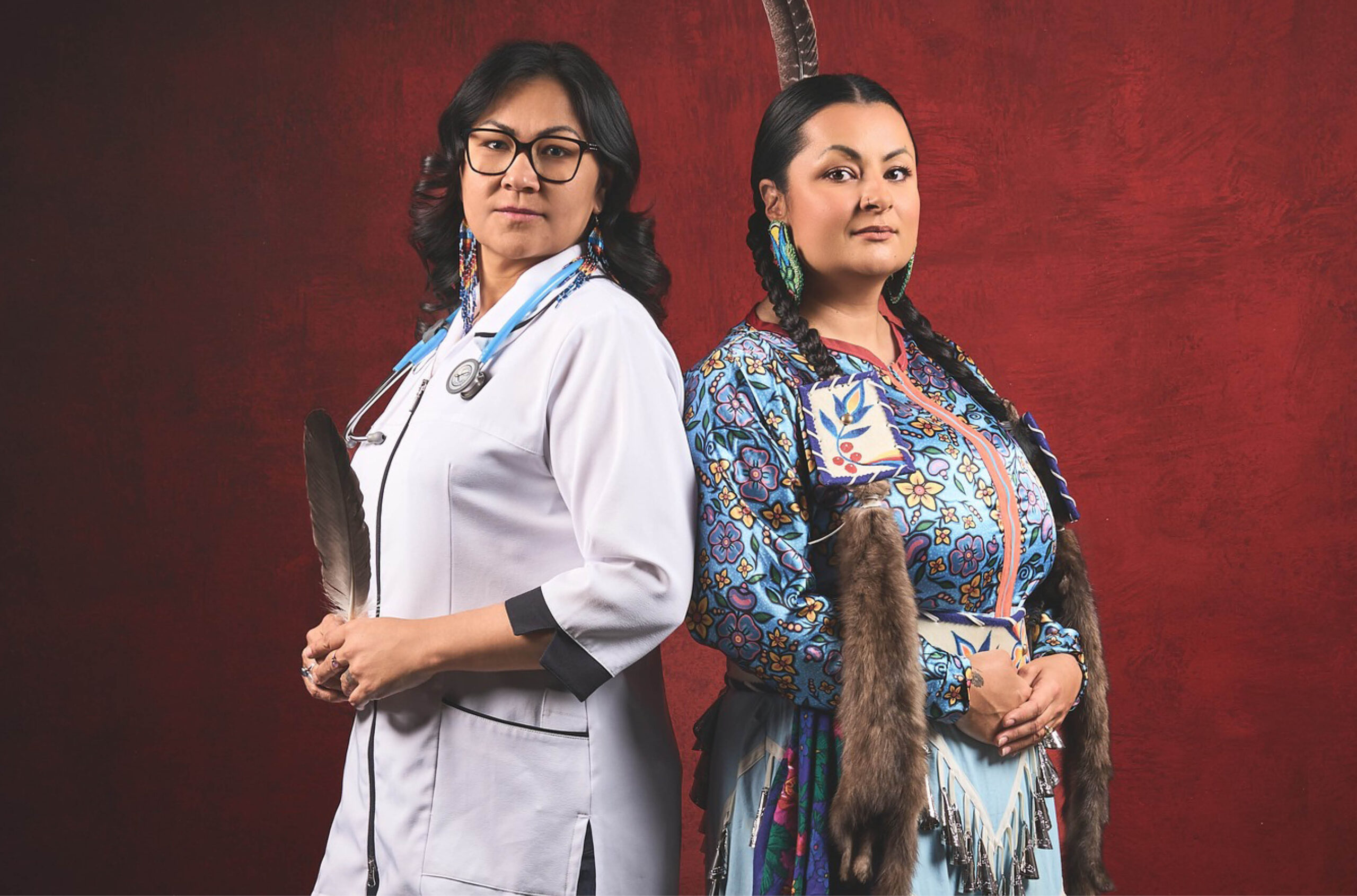National Day for Truth & Reconciliation: universities and schools must acknowledge how colonial education has reproduced anti-Indigenous racism
Reconciliation in education begins by acknowledging how educational systems — in particular, our universities, teacher education programs and curricula — have reproduced systemic anti-Indigenous racisms across Canada.

As we move towards Sept. 30, many schools and universities will be talking about observing the new National Day for Truth and Reconciliation.
Many schools formerly observed this day as Orange Shirt Day to acknowledge the intergenerational impacts of the residential schooling system — but Sept. 30 has now been declared a statutory holiday by the federal government in response to calls by the Truth and Reconciliation Commission.
When it comes to all of our institutions — and educational institutions in particular — it’s critical to move far beyond a single day of remembrance.
We are educational researchers who seek to understand how teacher education programs are — or aren’t — addressing truth and reconciliation education. Reconciliation in education begins by acknowledging how educational systems — in particular, our universities, teacher education programs and curricula — have reproduced systemic anti-Indigenous racisms across Canada.
There are many First Nations, Inuit and Métis-led grassroots social justice activities and campaigns that teachers can take up during and after Sept. 30th. It will be important to reconsider how respecting relationships and honestly examining and sharing our histories might guide the educational work ahead of us this school year.
Dismantling myths
A misconception that remains about the Indian Residential School system is the myth of its beneficial, benevolent intentions.
This myth that continues to be put forth by some settler Canadians avoids acknowledging the intergenerational trauma stemming from residential schooling. It also denies that residential schooling was part of a larger settler colonial system.
This settler colonial system was driven by the expropriation of land and institutionalized genocide designed, as Duncan Campbell Scott, deputy superintendent of the Department of Indian Affairs (1913-32), stressed, to “get rid of the Indian problem.” It was a means for seizing and securing land for the expansion of a commonwealth empire.
As political commentator and journalist John McGrath writes: “Residential schools were as much a part of the Canadian national project as railroads, medicare or fighting in two world wars.”
‘Restorying’ settler colonial legacies
Greater and specific understandings of who designed, administered and taught at these institutions is needed to help people understand the specific ways we can become more accountable to redress their harms.
For example, two of the authors of this story research and teach at the University of Ottawa. The Oblates of Mary Immaculate, a Catholic order from France, founded the educational institution which later became our university. The Oblates ran at least 34 per cent of the Indian Residential Schools in Canada, including the Kamloops Residential School, where the remains of 215 children were discovered in May.

This past September, on the front lawns of University of Ottawa’s main building, Tabaret Hall, representatives of the Algonquin First Nations and Elder Peter Decontie lit a ceremonial fire. This occasion was named Pinzibìwin | Amitié | Friendship and sought to acknowledge and renew our relations for moving forward together in a good way.
At the University of Ottawa’s faculty of education, one way we can respond to the responsibilities we inherit to uphold the spirit of Pinzibìwin is by seeking to understand interconnections between the role that the Oblate religious order had in founding the University of Ottawa and in operating residential schools. More information is needed to move towards deeper understanding and accountability, particularly as we seek to educate teachers about standing in classrooms and discussing truth and reconciliation.
The past is present
Teachers and leaders in educational institutions must continue to question and address how teacher education programs, as well as provincial curricula, continue to be largely framed by settler colonial worldviews, histories and perspectives.
Normal schools were 19th-century institutions designed to train school teachers for the one-room schoolhouse model of education. At the turn of the 20th century, normal schools participated in advancing racialized narratives of settler colonial progress.
Dwayne Donald, Papaschase Cree scholar at the University of Alberta, emphasizes how settler myths in curriculum continue to deny Canadian and Indigenous relationships and to have “divisive and damaging” effects. These settler myths, he notes, deny Canadian and Indigenous relationships. Donald urges educators to reflect on new stories that repair these “colonial divides.”
Each story holds power
What children and youth learn at school and what teachers-to-be learn in university can provoke the kinds of thinking and feeling that will not only challenge settler denial, but also facilitate new stories.
In preparation for this school year, more than 200 educators attended the Spirit Bear Retreat for Teacher Professional Learning organized by the faculty of education at the University of Ottawa in collaboration with the First Nations Child and Family Caring Society. These educators took up calls to action toward “restorying” (restoring, and creating new stories about) our past, present and future relations.
Reeta Koostachin, an Attawapiskat and Fort Albany First Nations member and student at the University of Ottawa, reminded participants:
“I am sitting in white classrooms right now, attending university, and at the same time, I will never forget my roots. My reserve is my home, but the truth is … (in) modern Canada, I come from poverty. Many reserves are places where basic human rights are not promised, and yes, I am … proud of where I come from, and I refuse to be seen as one of the lucky ones that made it out, because I strive towards ways to improve the lives of my people back home, every day.”
First Nations, Inuit and Métis-led learning
Teachers, schools and educators can draw on many resources as they aspire towards ongoing, daily commitments towards a shared future.
These include Truth and Reconciliation Week, various Orange Shirt Day events, the Project of Heart Curriculum guides for grades 6, 8 and 10. In Ottawa, people can learn more about the upcoming National Day for Truth and Reconciliation at Beechwood Cemetery in Ottawa, and the Remember Me Ceremony, Spiritwalk and Performance.
Let’s commit to reimagining, restorying and renewing our past, present and future relations.
If you are an Indian Residential School survivor, or have been affected by the residential school system and need help, you can contact the 24-hour Indian Residential Schools Crisis Line: 1-866-925-4419.
Lisa Howell is a PhD candidate and part-time professor in the faculty of education at the University of Ottawa; Kiera Brant-Birioukov is an assistant professor in the faculty of education at York University, Canada, and Nicholas Ng-A-Fook is a professor of curriculum studies at the University of Ottawa. This article is republished from The Conversation under a Creative Commons license. Read the original article.

Featured Jobs
- Finance - Faculty PositionUniversity of Alberta
- Medicine - Associate or Full Professor Professor (Kidney Health)Université de Montréal
- Engineering - Assistant or Associate Professor (Robotics & AI)University of Alberta
- Architecture - Assistant Professor (environmental humanities and design)McGill University
- Sociology - Tenure-Track Position (Crime and Community)Brandon University














Post a comment
University Affairs moderates all comments according to the following guidelines. If approved, comments generally appear within one business day. We may republish particularly insightful remarks in our print edition or elsewhere.
1 Comments
I fully agree with the points made, but think the task is much bigger than that described. As a former teacher of Canadian History, I found the whole of my materials cloaked in an Anglo-settler mythology that was prepared to argue that Canada was “forged in the fires of Vimy Ridge.” This and similar perspectives cloaked that Canada was actually forged in the Anglo desire for resources extracted from the land–the fish, the ores, the lumber, the wheat, the cattle–and that every aspect of Canada flows consequently from that drive (Let alone that a third or more of Canadians opposed Canada’s presence at Vimy Ridge). Canada was driven into existence by the need to take out of the continent resources valuable in Europe and to do so by first attempting to exploit and then eradicate those who found their living in ways that interfered with this drive. Eurocentric exploitation is the backbone of Canadian identity and remains true. The story of Canada itself needs to be told, not as one which has damaged First Nations, but as one which is completely incompatible with the recognition of First Nations as peoples with intrinsic dignity and legitimacy with rights to make decisions about the land in their very being. We need to start the story of “Canada” with that violation of humanity in the interests of economic values. Then we need to ponder who we really are and what our values, indeed our constitution, stands for. Do we insist on maintaining that Eurocentric drive? And at what continuing cost?